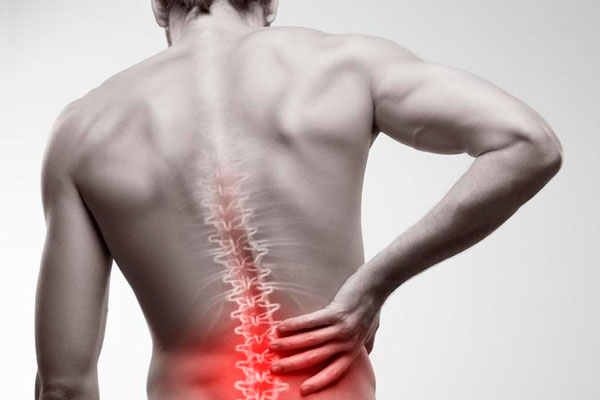
Back pain is an incredibly common issue and affects most people at some point during their lives, often interfering with their ability to complete daily tasks and sometimes taking a toll on their mental health. Fortunately, most incidences of back pain are not serious and resolve themselves within a few days or weeks. Non-serious back pain is usually caused by a simple ligament or muscle strain and can be treated relatively easily with painkillers and gentle exercise. It is important to note that staying active is one of the best things you can do if you experience a strain or sprain, whilst excessive rest can actually make the problem worse.
Of course, to ascertain whether you’ve simply pulled a muscle or have sustained more serious damage, it is important to understand the different kinds of conditions that can affect the back, along with their various symptoms. To help you understand your pain, we’ve listed a few common causes below as well as tips for managing back pain and when to see a medical professional.
Causes of back pain
It is often difficult to pinpoint the precise cause of a person’s back pain. Most of the time, it can be explained by one of the following reasons:
– Poor posture
– Stiffening of the spine caused by a lack of exercise
– Sprains or strains
To combat back stiffness and poor posture, it is recommended that you build up muscles around the spinal area through regular strengthening exercises. Although exercise may feel a little painful if you are not used to it, you will start to feel the benefits after only a few sessions. Good exercises to build up back strength include walking, Pilates, swimming, and yoga. It is also recommended that you visit a physiotherapist or rheumatologist who will be able to offer diagnostic help and show you some simple exercises that may speed up the recovery process.
Some types of back pain can be attributed by a particular condition, including:
Sciatica
Sciatica is a condition caused by nerve compression in the spine, usually the result of a bulging disc. Although it is not a serious or life-threatening condition, it can result in very intense back pain that extends through the legs, sometimes causing feelings of numbness and tingling. The best treatment for sciatica is gentle exercise.
Spondylosis
Spondylosis is an age-related condition characterised by thinning of the spinal discs and the development of small pieces of bones at the edge of the vertebrae. Symptoms include pain and stiffness. If you experience spondylosis, it is recommended that you keep the spine supple and strengthen the pelvis through regular gentle exercise.
More serious conditions
Rarer and more severe causes of back pain include bone fractures, infections, tumours, and inflammatory conditions such as ankylosing spondylitis. These problems require more urgent and intensive therapies than the conditions mentioned above, so it is important that you see a medical professional if you are experiencing particularly intense or persistent back pain.
When to see a medical professional
Firstly, it is important to ascertain whether your back pain is serious. Signs that you should visit a doctor or emergency department urgently include:
– The pain is excruciating and caused by significant trauma to the body
– You are experiencing fever or confusion
– There is blood in your urine or stools
– The pain is worsening
– The pain cannot be alleviated by changing positions
– Progressive numbness in the legs
– Loss of control of bladder or bowel
If your back pain is non-urgent and lasts more than a few days, you will likely benefit from visiting a specialist such as Dr Naveen Bhadauria. Dr Bhadauria is a rheumatologist who offers unrivalled help to those suffering from persistent and life-limiting back pain. Do not hesitate to reach out to him today to book an appointment.
Article by Dr. Naveen Bhadauria



